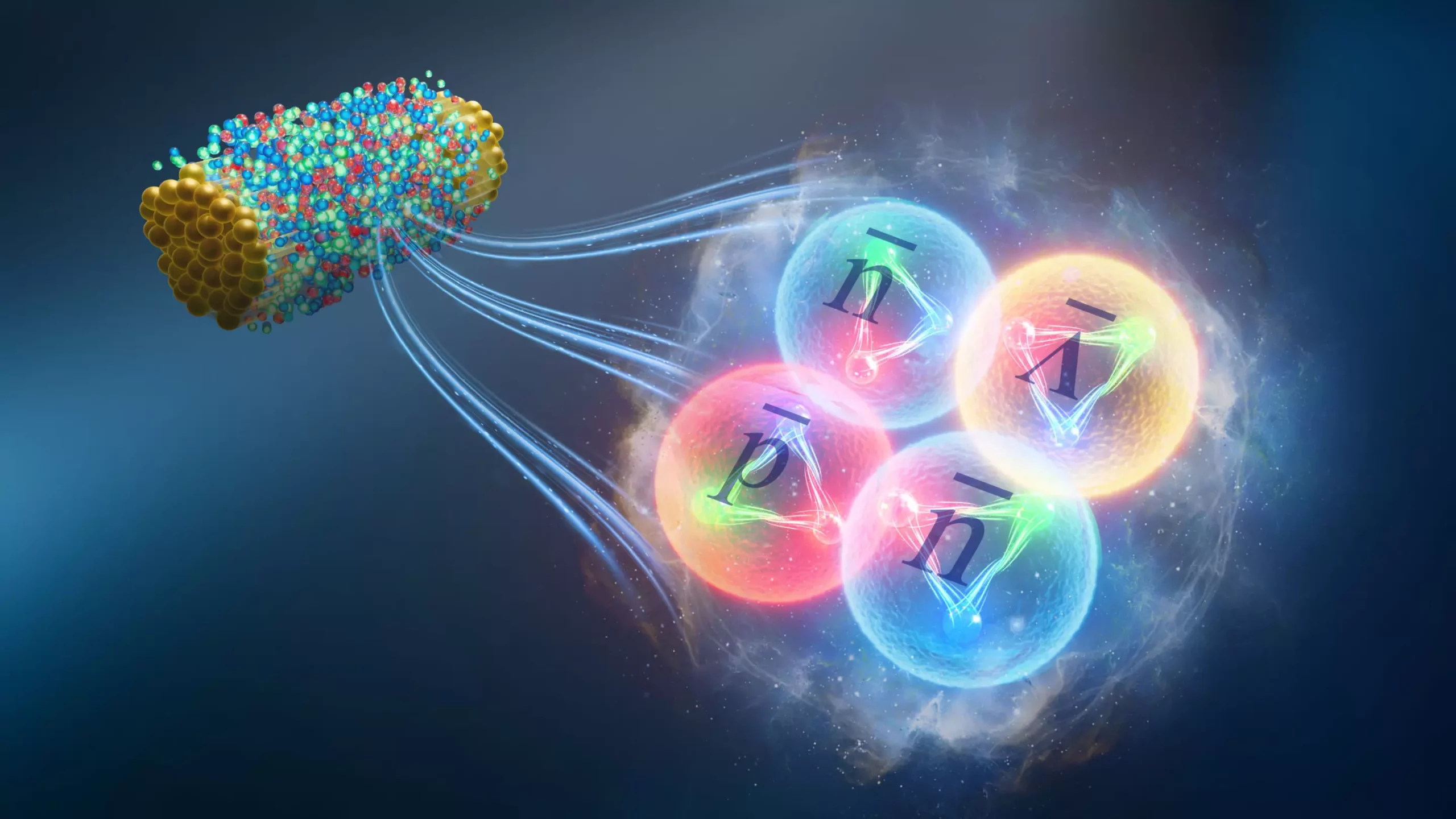The exploration of fundamental particles and their interactions is a cornerstone of modern physics. At the forefront of this exploration is the Relativistic Heavy Ion Collider (RHIC) located at Brookhaven National Laboratory. This machine, often dubbed an “atom smasher,” accelerates ions at velocities approaching the speed of light, creating extreme conditions reminiscent of the early universe. A recent groundbreaking discovery made by the STAR Collaboration at RHIC has unveiled a rare and exotic form of antimatter—a particle known as antihyperhydrogen-4. This article delves into the significance of this discovery, the underlying physics, and its broader implications for our understanding of the universe.
Antihyperhydrogen-4 is a complex antimatter nucleus that consists of one antiproton, two antineutrons, and one antihyperon, specifically an antilambda particle. This discovery is notable not only for the rarity of its components but also because it brings to light a new realm of particle interactions. Previous milestones in the realm of antimatter at RHIC included the detection of antihypertriton and antihelium-4, yet antihyperhydrogen-4 takes this a step further, showcasing the intricate possibilities available within the world of antiparticles.
The existence of antimatter has intrigued scientists since the early days of quantum mechanics. Antimatter particles essentially mirror their matter counterparts, yet carry opposite charge. The standard understanding dictates that both matter and antimatter were formed in equal amounts during the Big Bang, so it raises a pivotal question: why do we observe a universe dominated by matter? The search for differences in behavior or properties between matter and antimatter could provide crucial insights into this cosmic mystery.
STAR physicist Junlin Wu remarked, “Our physics knowledge about matter and antimatter indicates they possess similar properties.” The genuine curiosity lies in deciphering potential asymmetries that could explain the apparent discrepancy in their existence today. The recent discovery of antihyperhydrogen-4 thus serves as a key advancement in probing this longstanding question.
The journey to identifying antihyperhydrogen-4 was anything but straightforward. The RHIC’s particle detectors analyzed the aftermath of six billion collisions resulting from accelerated heavy ion interactions. This “quark-gluon soup,” created from colliding atomic nuclei, generates an overwhelming number of particles, some of which are the rare antimatter nuclei that scientists aim to detect.
In their experiments, STAR researchers utilized advanced particle tracking techniques to identify specific decay patterns from the collisions. The search involved meticulously sifting through billions of decay events, looking for discerning characteristics that could indicate the presence of the elusive antihyperhydrogen-4. The analysis revealed 22 candidate events, each representing a likely decay from this exotic particle, although background noise complicated the results. After accounting for this noise, the scientists confidently estimated the detection of around 16 actual antihyperhydrogen-4 nuclei.
One of the most significant aspects of this discovery is the opportunity it provides for comparing matter and antimatter particles directly. By analyzing the lifetimes of antihyperhydrogen-4 alongside hyperhydrogen-4, researchers hope to uncover any discrepancies that might hint at deeper underlying physical phenomena. Such comparisons are crucial, as they either reinforce existing models in particle physics or potentially indicate new physics waiting to be discovered.
Interestingly, the data collected indicated no significant divergence between the lifetimes of the two particles, aligning with the presumption that the observed asymmetry in the universe is not fundamentally altered by these interactions. This consistency offers some comfort to physicists, suggesting that our current understanding of particle interactions remains robust.
As the STAR Collaboration continues to analyze the properties of antihyperhydrogen-4, the next logical step involves measuring the mass difference between matter and antimatter particles. Understanding these nuances will be crucial in ultimately addressing the enigmatic matter-antimatter imbalance. Given the complexities and challenges inherent in detecting and analyzing antimatter, the implications of this discovery extend far beyond academic interest; they resonate with fundamental questions about the evolution of the universe itself.
The discovery of antihyperhydrogen-4 at the RHIC marks a significant step forward in antimatter research, allowing physicists to explore the properties and interactions of antiparticles in greater detail. As scientists pursue answers to the question of why our universe is predominantly composed of matter, discoveries like antihyperhydrogen-4 could provide essential insights and yield a deeper understanding of cosmic evolution. The quest continues, and the revelations from RHIC serve as a powerful reminder of the mysteries that still await us in the universe.

